Baltimore Checkerspot Butterfly Colony
Caumsett State Historic Park Preserve contains the only known breeding colony of the Baltimore Checkerspot butterfly on all of Long Island. While this butterfly is found throughout New York State there have only been 4 recorded sightings on Long Island over a period of 40 years prior to its discovery at Caumsett in 2009.
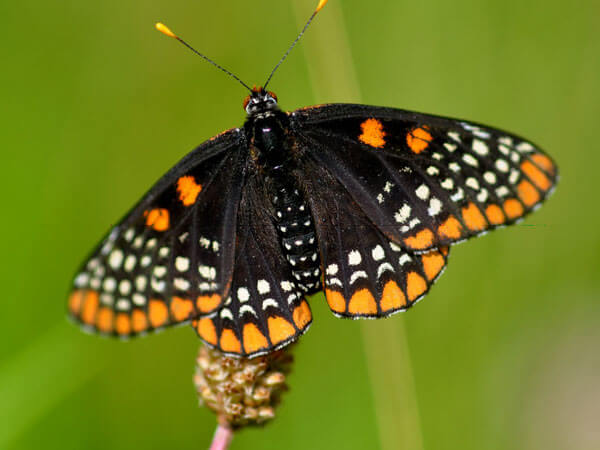
Adult Baltimore Checkerspot Butterfly in its full glory of colors at Caumsett.
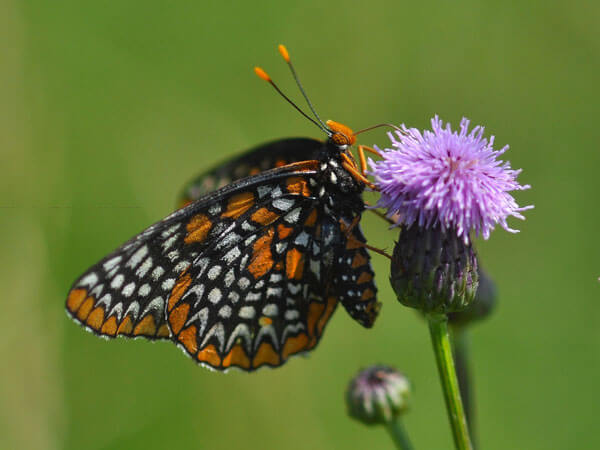
Adult Checkerspot on Canada thistle.
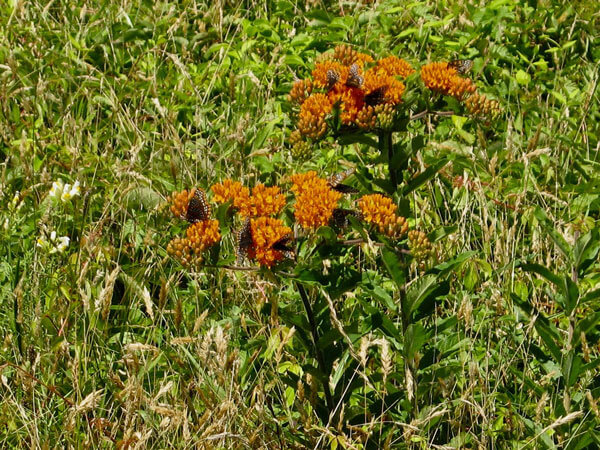
Adult Checkerspots enjoying the nectar of Butterfly weed (Asclepias tuberose) at Caumsett.
Location of Colony within Caumsett
The colony is located in the southeast corner of the Park within the grassland habitat. Most of the Checkerspot butterflies occupy approximately 10 acres known as Butterfly Hill and Bull Pen #1 Field. Both fields contain good stands of English plantain (Plantago lanceolata) the host plant of the Checkerspot.
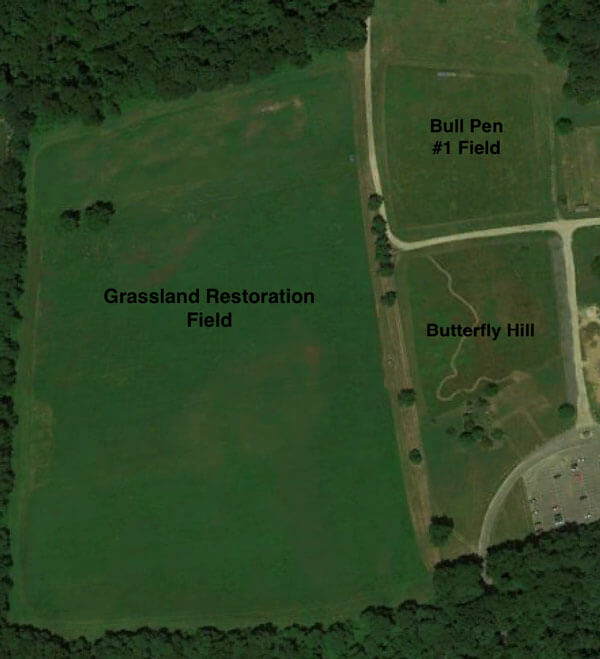
Labeled Google Earth photo of the area
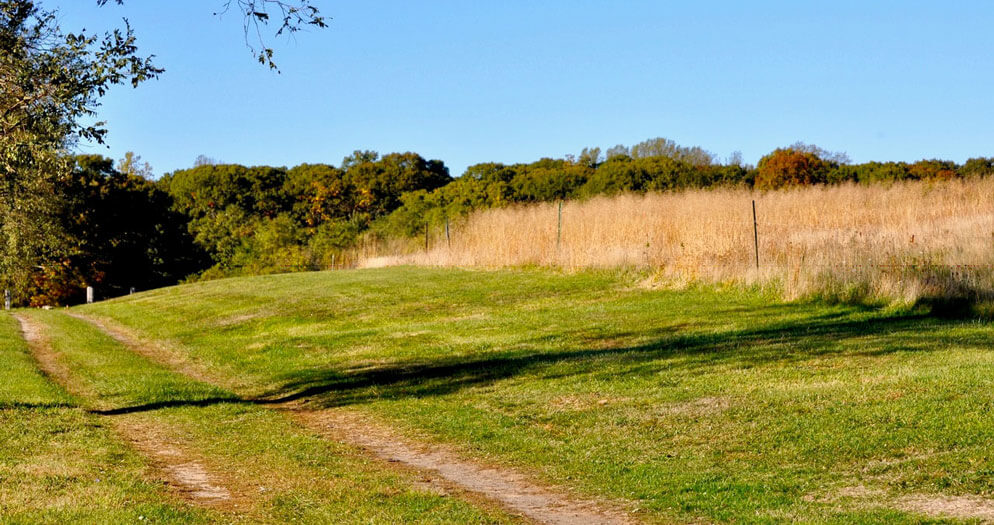
The western border of Butterfly Hill in October.
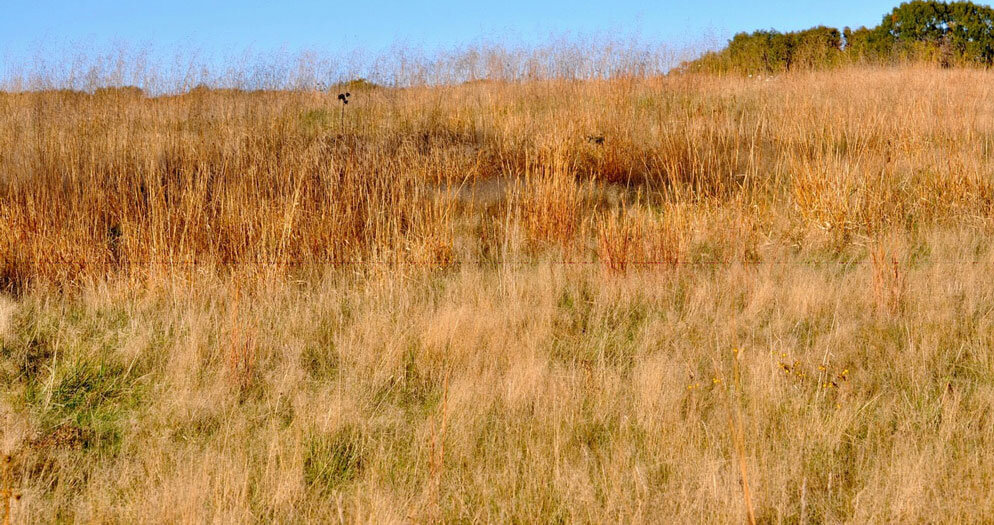
A view of Butterfly Hill looking northeast taken in October. Notice the mix of warm and cool season grasses.
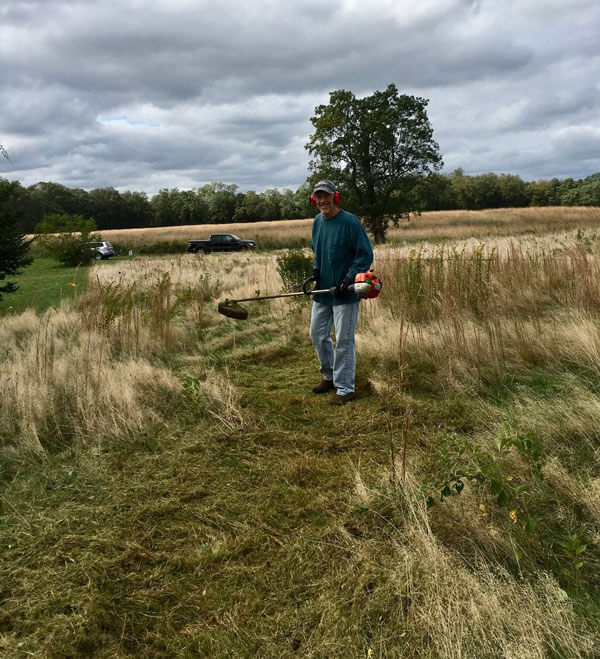
Volunteer cutting footpath in October on Butterfly Hill after all larvae nests were found and marked.
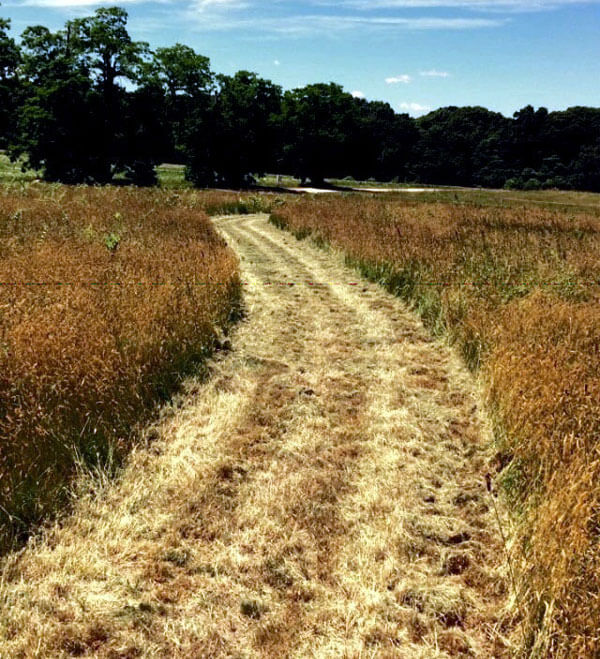
Footpath along Butterfly Hill
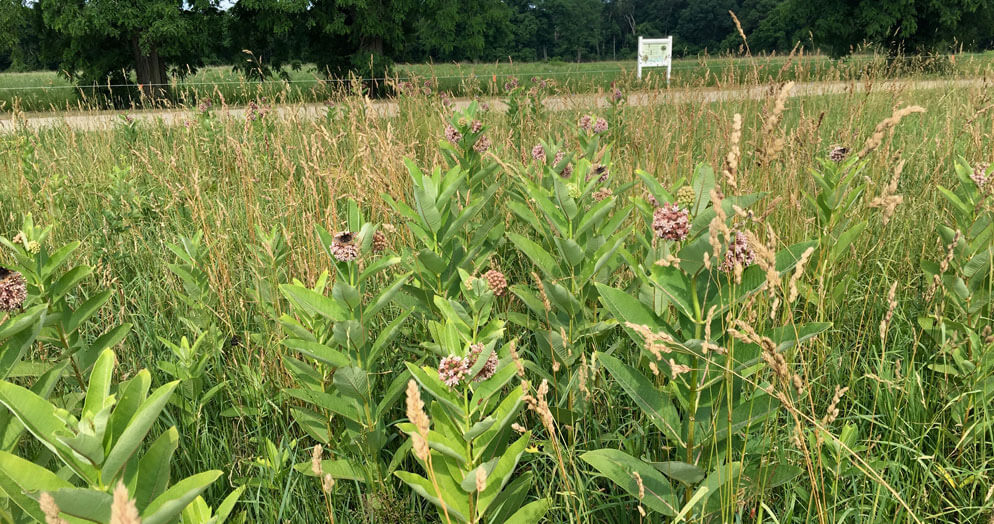
Each year Common Milkweed spreads in both fields used by the Checkerspots. Looking west from Bull Pen field.
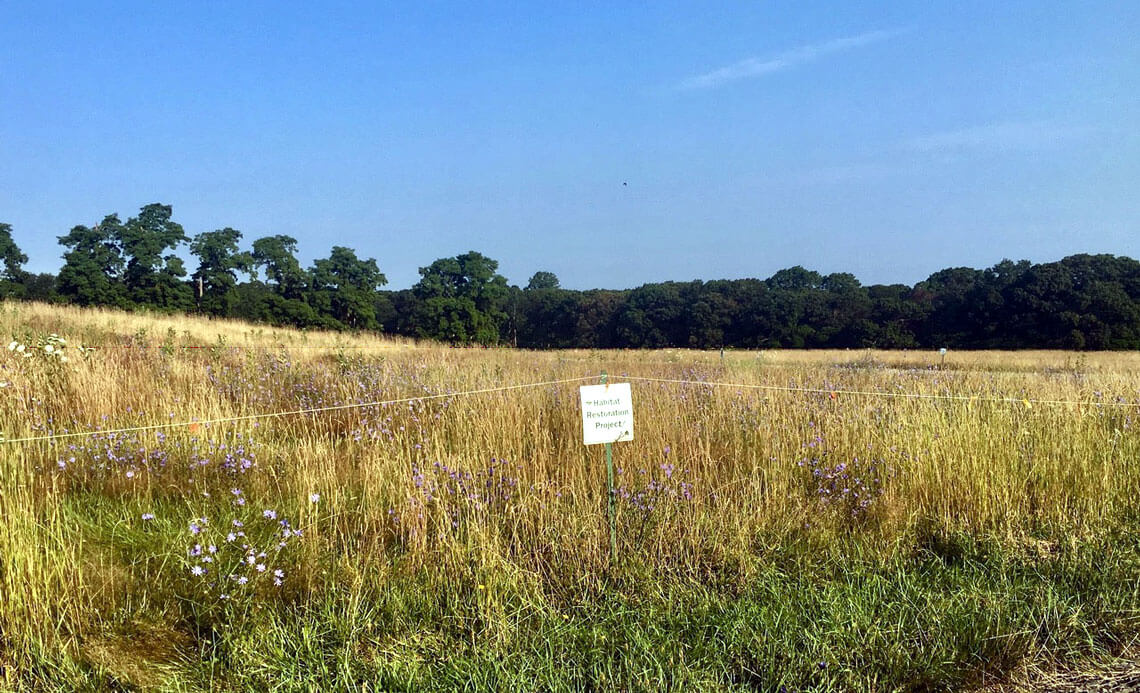
A view of Butterfly Hill looking northwest.
Management
The Checkerspot’s habitat needs to be managed for its fragile population to survive. Mowing during an active life cycle stage jeopardizes its survival especially being a single brood species. Fortunately, proper management can be achieved by mowing the butterfly habitat during a specified time period. This mowing window commences when the ground has hardened generally after the first hard frost. As the air temperature decreases the larvae migrate under the dense grass mat where they are protected from the mower blades and weight of tractor tires. Mowing can occur up until March 31 after which time the larvae can emerge. Another important function of mowing is to ensure that the host plant will continue to thrive and not be shaded out by other vegetation.
Life Cycle Timing at Caumsett
In late April the larvae begin to emerge and by early May they become easy to spot on the English plantain. Larvae have been found as late as June 22 overlapping with chrysalises, which can be present to the end of June. Adult flight has occurred between June 5 and 12 but more often during the early days of June. Few adults are present after July 1 and larvae tents are found in the third week of July.
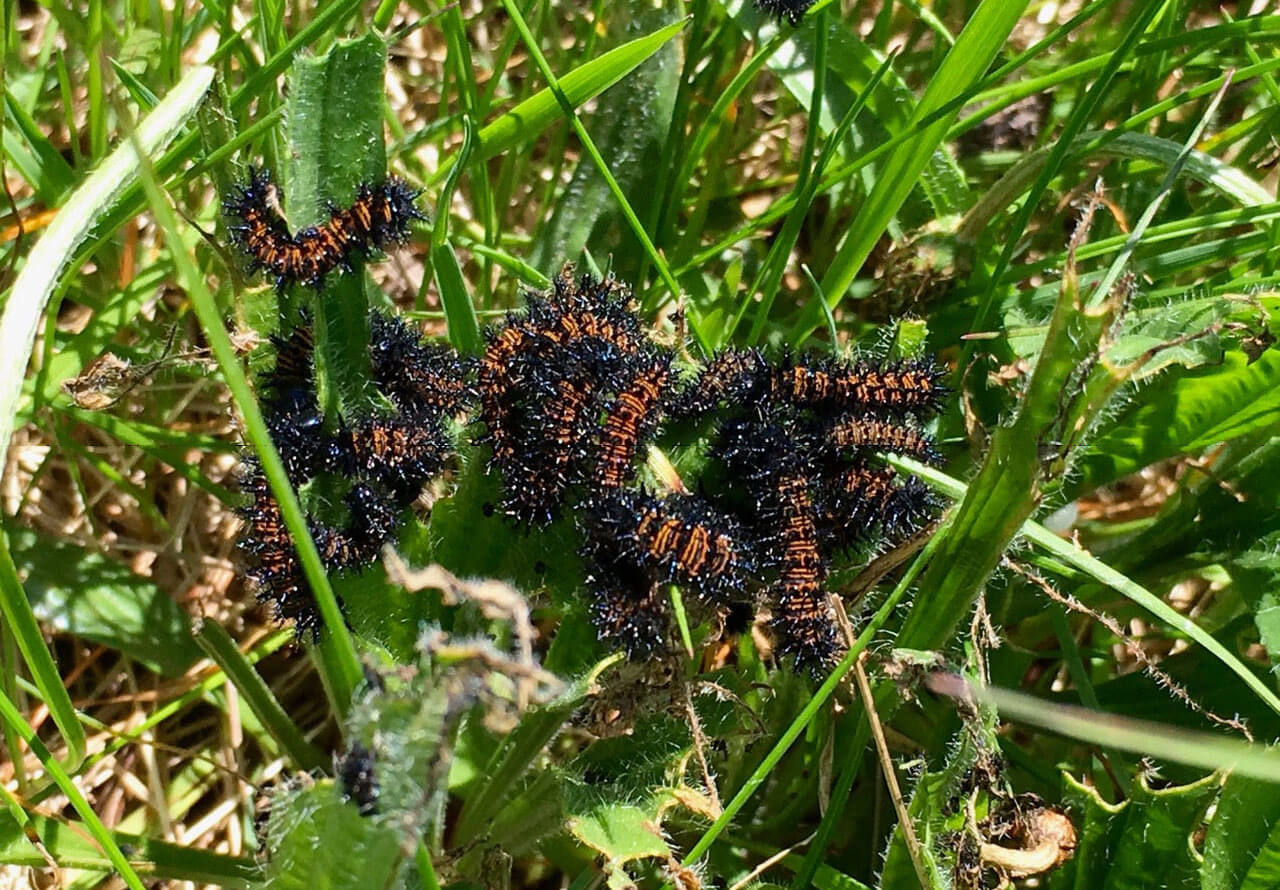
Larvae found in Bull Pen Field on 6 May 2017.
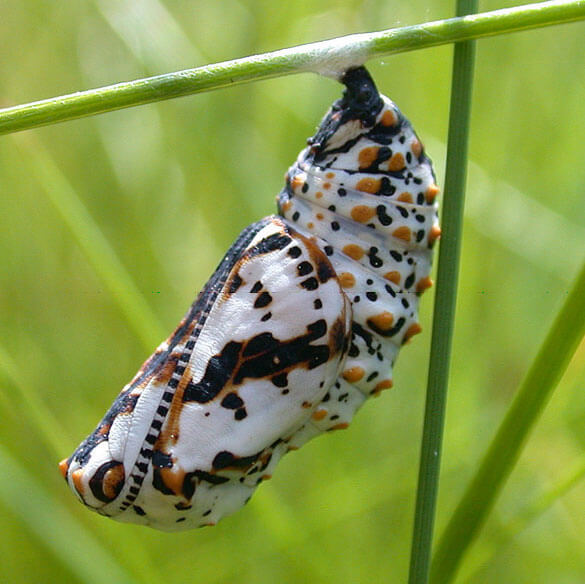
Chrysalis of Baltimore Checkerspot Butterfly.
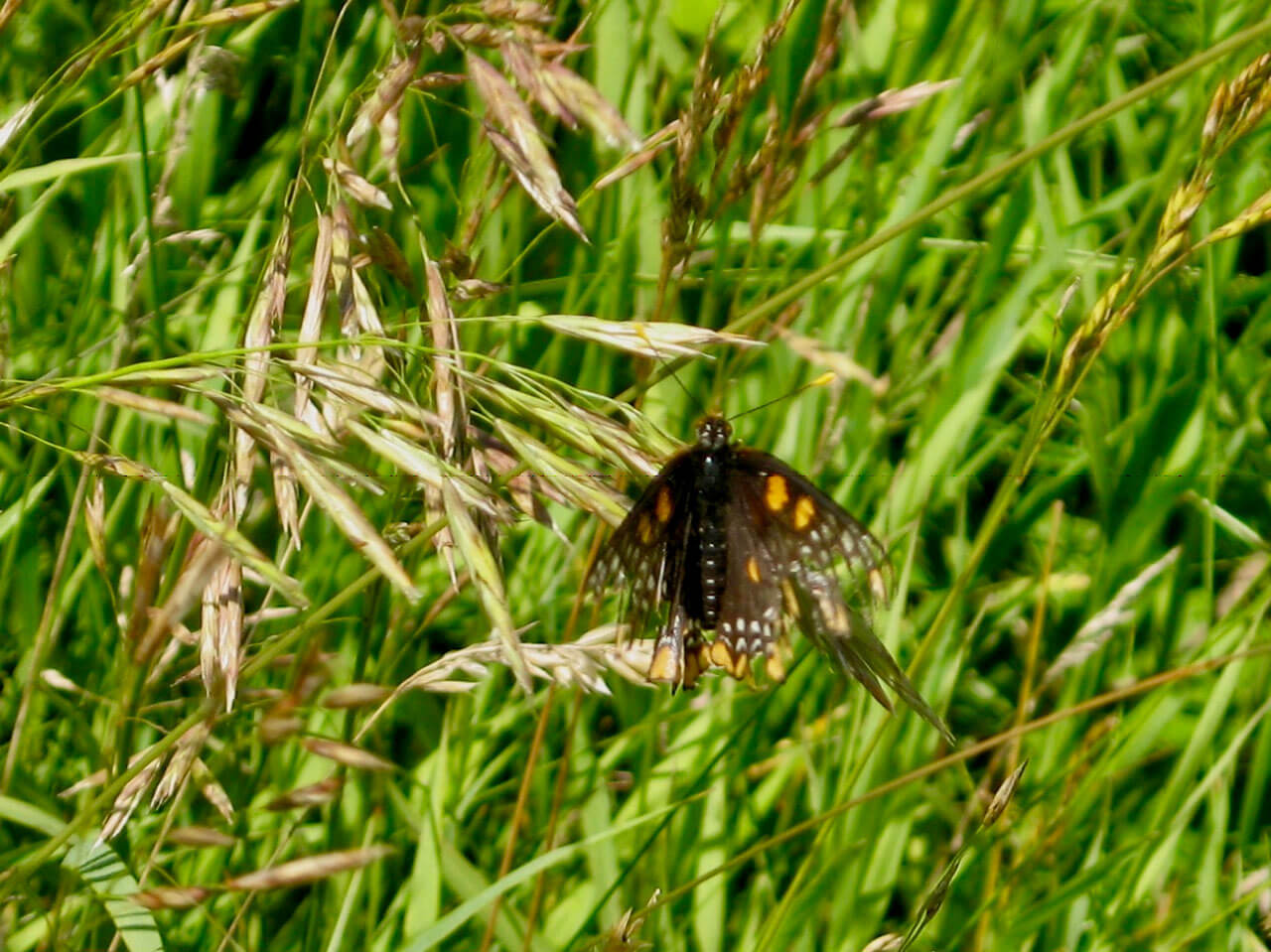
Worn adult on 30 June.
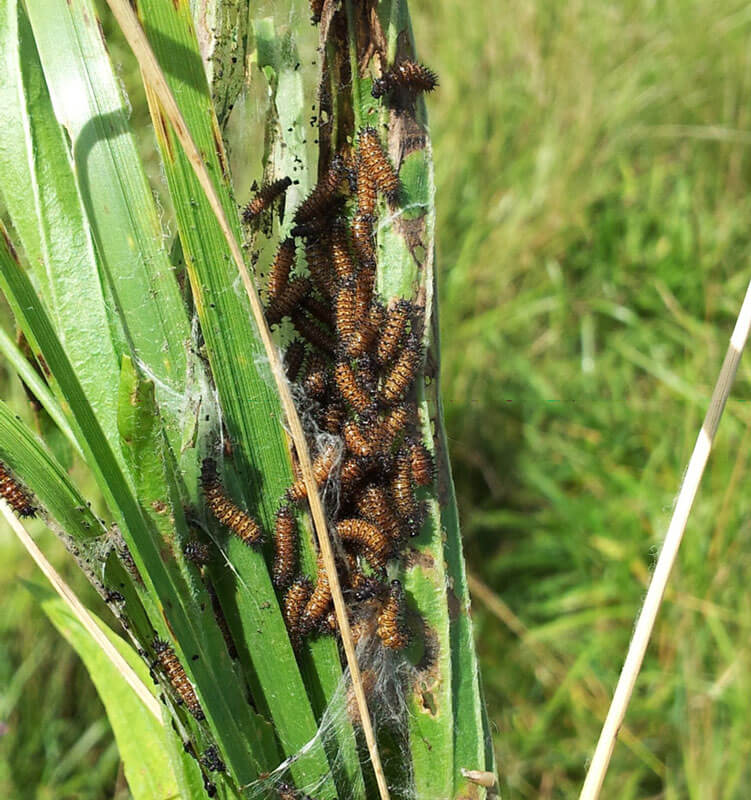
Active larvae tent wrapped in English plantain leaves in August.
Monitoring the Population
The adult population has been monitored since 2010 with the peak annual adult counts as follows:
| Year | Peak Date | Adult |
|---|---|---|
| 2009 | June 30 | 53 |
| 2010 | June 18 | 322 |
| 2011 | June 17 | 1,000 |
| 2012 | June 23 | 700 |
| 2013 | June 17 | 500 |
| 2014 | June 20 | 550 |
| 2015 | June 23 | 155 |
| 2016 | June 20 | 158 |
| 2017 | June 22 | 138 |
| 2018 | June 21 | 929 |
| 2019 | June 24 | 214 |
| 2020 | June 19 | 1,040 |
| 2021 | June 15 | 1,410 |
| 2022 | June 13 | 1,623 |
| 2023 | June 15 | 75 |
| 2024 | June 12 | 443 |
Reference
Baltimore Checkerspots Recolonize Long Island, New York - American Butterflies Volume 17: Number 4 Winter 2009.
